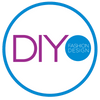Sustainable Fashion Design: Incorporating Good Practices for a Greener Future
In recent years, the fashion industry has faced increasing scrutiny for its environmental impact and the exploitation of labor. As a response, more and more designers are now embracing sustainability as a core value in their creative processes. If you're a new designer looking to make a positive change in the fashion world, here are some good practices that you should consider:
1. Embrace Slow Fashion:
Slow fashion promotes the idea of creating high-quality, timeless pieces that are made to last. As a designer, focus on designing versatile and durable garments that can be worn for years, rather than following fast-paced trends that lead to excessive consumption.
2. Use Sustainable Materials:
Opt for eco-friendly and ethically sourced materials as the foundation of your designs. Fabrics like organic cotton, linen, hemp, and bamboo have less environmental impact than conventional options like polyester or nylon. Explore innovative materials made from recycled plastic bottles or agricultural waste to further reduce your ecological footprint.
3. Reduce Waste:
Encourage a zero-waste mindset throughout your design process. Utilize pattern cutting techniques that minimize fabric waste and consider upcycling or repurposing discarded materials to create unique designs. Collaborate with local suppliers to recycle and reuse fabrics whenever possible.
4. Prioritize Ethical Production:
Ensure that your garments are made under fair working conditions. Collaborate with manufacturers that embrace ethical labor practices and pay fair wages. Visiting production sites and building relationships with your suppliers will help you ensure that your values align.
5. Embrace Renewable Energy:
Consider the energy consumption associated with the production process. Incorporating renewable energy sources, like solar or wind power, into your manufacturing facilities not only reduces your carbon footprint but also sets an example for other designers and the industry as a whole.
6. Educate Consumers:
Raise awareness about sustainability within the fashion industry by incorporating transparent labeling. Help consumers make informed choices about their purchases by providing information about your materials, production processes, and certifications. Share the story behind your brand and highlight the positive impact they can have by choosing your products.
7. Design for Circular Economy:
Embrace the concept of a circular economy by designing garments that can be easily repaired, recycled, or transformed at the end of their life cycle. Consider creating modular or multi-functional pieces that can be adapted to different styles or sizes, promoting longevity and reducing waste.
8. Collaborate and Share Knowledge:
Engaging with like-minded designers, organizations, and consumers is essential for promoting sustainable fashion. Collaborate with other designers to exchange ideas and solutions, participate in sustainable fashion initiatives, and share your knowledge and experiences to inspire others to make a positive impact.
9. Continuous Learning:
Stay informed about the latest advancements in sustainable materials, manufacturing processes, and technologies. Attend workshops, seminars, and conferences, and stay connected to industry experts, environmental organizations, and sustainable fashion communities to keep improving and innovating your practices.
10. Stay Committed:
Remember, sustainable fashion is an ongoing journey. It requires constant evaluation and improvement. Stay dedicated to your values and integrate sustainable practices into every aspect of your design process, from ideation to production and beyond.
As a new designer, adopting these sustainable practices will help you create a positive impact in the fashion industry. By embracing slow fashion, using sustainable materials, reducing waste, prioritizing ethical production, and educating consumers, you can play a role in building a greener, fairer fashion future. Let's design a world where fashion and sustainability go hand in hand
